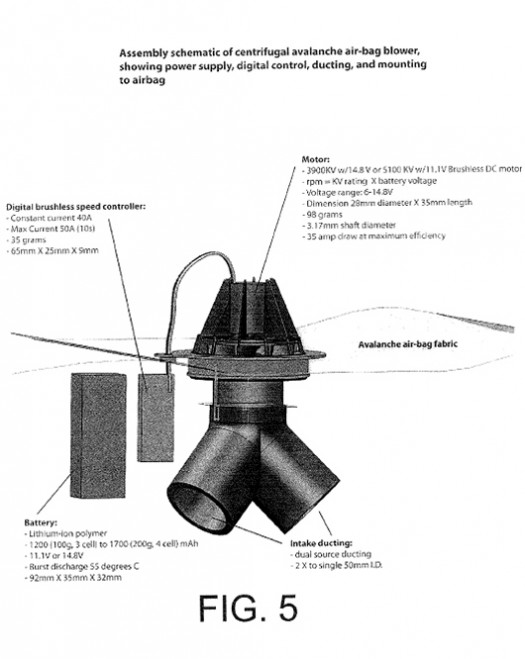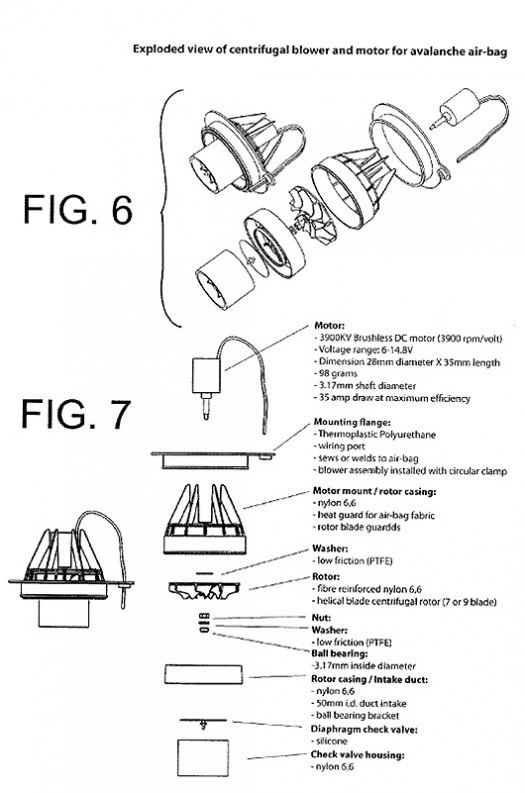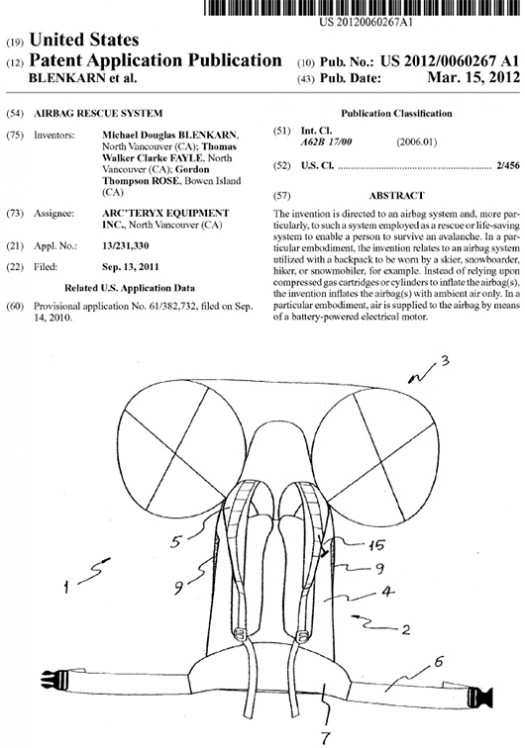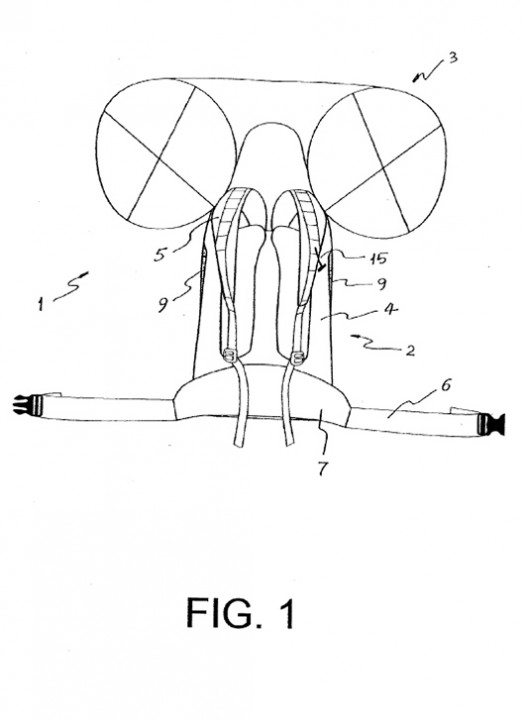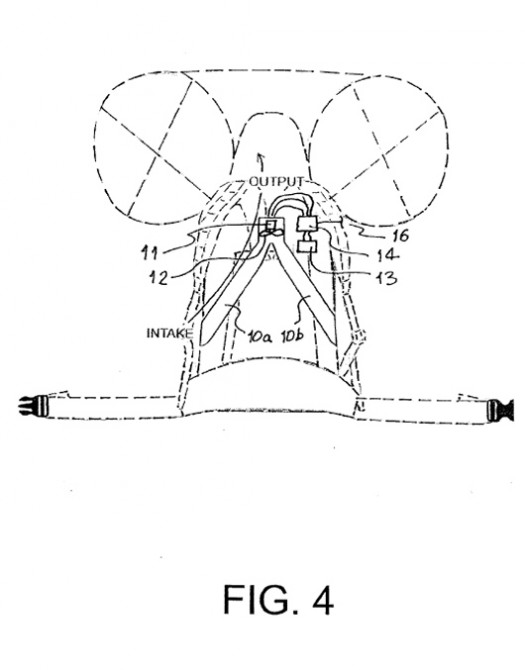I’m in a state of fascination now that I’ve had time to peruse the Arcteryx patent for a battery operated fan-filled avalanche airbag pack. The patent includes juicy tidbits such as the idea of being able to fill the bags up to 50 times between charges, and including a motion switch that could activate the system without user intervention (with cutout, of course, in case you want to do inverted sorts of things on purpose). Perhaps most importantly, the system will weigh significantly less than compressed gas units and be easy for TSA to deal with (though the powerful lithium battery is probably subject to some sort of restriction). View the PDF here, or just check out the images below. Discuss? (Click images to enlarge slightly for more legibility, or peruse the PDF linked above.)
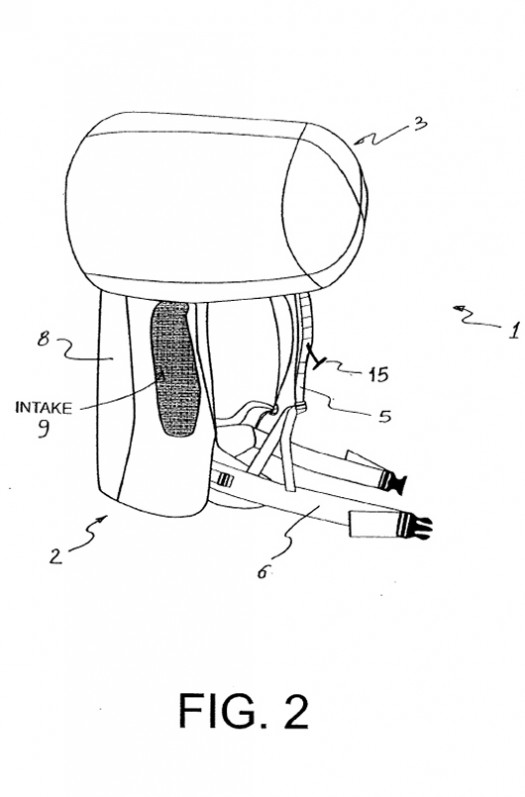
Another drawing from the patent, this one showing more the backpack. Hopefully they'll make the rucksack light as well, so combined with the electric system the whole rig will have an astounding lack of mass for backcountry skiing and other snowsports.
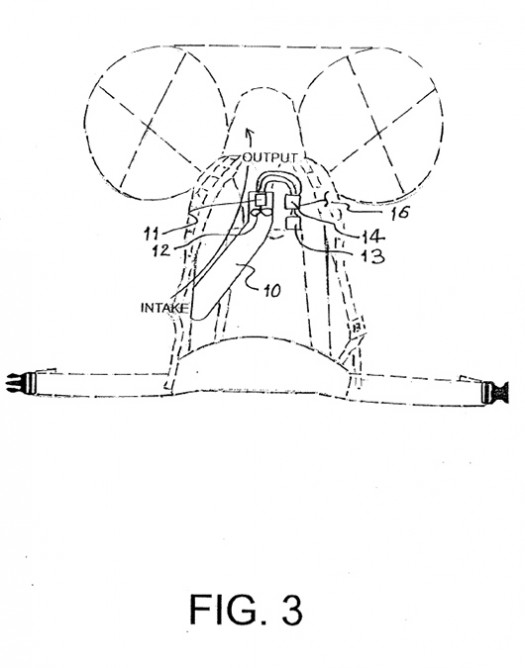
Another view of the proposed system for backcountry avalanche safety. Shape of the bags is optional, any volume can be filled with the blower or so the patent implies.
WildSnow.com publisher emeritus and founder Lou (Louis Dawson) has a 50+ years career in climbing, backcountry skiing and ski mountaineering. He was the first person in history to ski down all 54 Colorado 14,000-foot peaks, has authored numerous books about about backcountry skiing, and has skied from the summit of Denali in Alaska, North America’s highest mountain.

